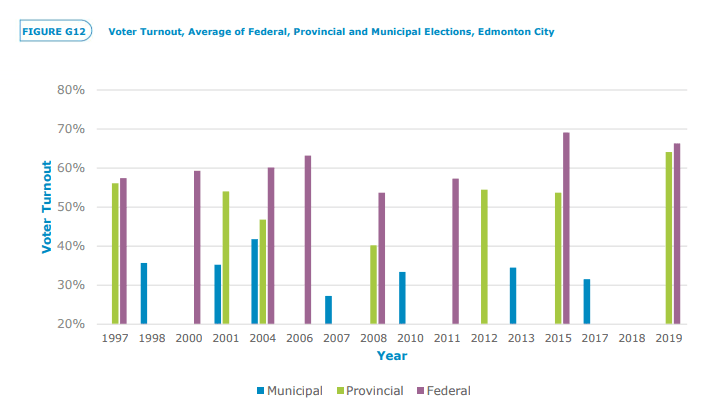[et_pb_section fb_built=”1″ _builder_version=”4.16″ custom_margin=”0px||0px||false|false” custom_padding=”0px||0px||false|false” global_colors_info=”{}”][et_pb_row column_structure=”3_4,1_4″ use_custom_gutter=”on” _builder_version=”4.16″ _module_preset=”default” width=”100%” custom_margin=”0px||||false|false” custom_padding=”0px||0px||false|false” border_width_bottom=”1px” border_color_bottom=”#a6c942″ global_colors_info=”{}”][et_pb_column type=”3_4″ _builder_version=”4.16″ _module_preset=”default” global_colors_info=”{}”][et_pb_post_title meta=”off” featured_image=”off” _builder_version=”4.16″ _module_preset=”default” title_font=”||||||||” custom_margin=”||3px|||” border_color_bottom=”#a6c942″ global_colors_info=”{}”][/et_pb_post_title][/et_pb_column][et_pb_column type=”1_4″ _builder_version=”4.16″ _module_preset=”default” global_colors_info=”{}”][et_pb_image src=”https://edmontonsocialplanning.ca/wp-content/uploads/2020/12/COLOUR-BLOCKS_spaced-300×51.png” title_text=”COLOUR BLOCKS_spaced” align=”center” _builder_version=”4.7.7″ _module_preset=”default” max_width=”100%” max_height=”75px” custom_margin=”0px|0px|0px|0px|false|false” custom_padding=”10px|0px|20px|0px|false|false” global_module=”96648″ global_colors_info=”{}”][/et_pb_image][/et_pb_column][/et_pb_row][et_pb_row column_structure=”3_4,1_4″ use_custom_gutter=”on” make_equal=”on” _builder_version=”4.16″ background_size=”initial” background_position=”top_left” background_repeat=”repeat” width=”100%” custom_margin=”0px|auto|0px|auto|false|false” custom_padding=”30px|0px|0px|0px|false|false” global_colors_info=”{}”][et_pb_column type=”3_4″ _builder_version=”4.16″ custom_padding=”0px|0px|0px|0px|false|false” global_colors_info=”{}” custom_padding__hover=”|||”][et_pb_text _builder_version=”4.16″ _dynamic_attributes=”content” _module_preset=”default” text_font=”|600|||||||” text_text_color=”#2b303a” custom_padding=”||32px|||” global_colors_info=”{}”]@ET-DC@eyJkeW5hbWljIjp0cnVlLCJjb250ZW50IjoicG9zdF9kYXRlIiwic2V0dGluZ3MiOnsiYmVmb3JlIjoiIiwiYWZ0ZXIiOiIiLCJkYXRlX2Zvcm1hdCI6ImRlZmF1bHQiLCJjdXN0b21fZGF0ZV9mb3JtYXQiOiIifX0=@[/et_pb_text][et_pb_text _builder_version=”4.19.0″ text_text_color=”#2b303a” text_line_height=”1.6em” header_2_font=”||||||||” header_2_text_color=”#008ac1″ header_2_font_size=”24px” background_size=”initial” background_position=”top_left” background_repeat=”repeat” text_orientation=”justified” width=”100%” module_alignment=”left” custom_margin=”0px|0px|0px|0px|false|false” custom_padding=”25px||||false|false” hover_enabled=”0″ locked=”off” global_colors_info=”{}” sticky_enabled=”0″]
By Susan Morrissey
In order to have a government provide services that are responsive to the needs of its citizens, data on its population is essential. Which is why every five years Statistics Canada conducts its Census of Population, the last one conducted in 2021. Each census paints a detailed picture of the diversity of Canada, be it linguistic, ethnocultural and religious affiliation, Indigenous identity, sexual orientation, and gender identity. Data from the census is used to plan where to build schools, roads, hospitals as well as plan for elections, social programs, seniors services, and more.
Census data is very important for organizations like the Edmonton Social Planning Council, which helps inform our research for publications and projects like Vital Signs and the Social Well-Being Tracker where measuring our city’s community health is integral to finding solutions to various social challenges.
While the data collected by the federal census is high-quality and critically important, the five-year gap between censuses means we do not have regular updates on how the population is growing and evolving during the gap years. Fortunately, these gaps in data have been supplemented by the City of Edmonton’s municipal census, which typically asks different questions and has historically been conducted once every two or three years and has been around since 1878 when Edmonton’s population was 148 people. Alberta is the only province that permits municipalities to conduct their own census thanks to the Municipal Government Act.
By closely tracking the population growth of Edmonton, census data enables the city to obtain more grant funding from the provincial and federal governments to put towards services like public transit and housing. The building of new recreation centres and branches of the Edmonton Public Library have been justified by the very data collected by the city. Edmonton’s public and Catholic school boards have also used municipal data as part of their planning.
Nevertheless, after the 2019 municipal census was completed, city council decided to stop conducting censuses to address budget constraints. This was a short-sighted decision as relying solely on federal census data does not allow for a real-time snapshot of our local community.
Edmonton city council recently conducted a review of their census policy on whether to bring back the municipal census. To our disappointment, they decided to put a pause on the census policy, which means there are no immediate plans to bring back the municipal census. However, it could be reinstated in the future pending further consultation.
There are a lot of social issues that need to be tackled on a local level and leveraging a municipal census could go a long way towards filling these data gaps. These issues are varied and diverse, such as calls for all levels of government to collect more race-based data to address racial inequities, better co-ordination of public transit services within the Edmonton metropolitan region, and scaling up urban agriculture and local food production within city limits. A municipal census could be used to capture some of this missing data and empower decision-makers and the public to explore and implement solutions.
With so many challenges associated with building a great city like Edmonton that has a growing and diverse population, we strongly urge city council to reconsider their decision and revive the municipal census so we have the data to inform city planning and guide city council to make responsive decisions on where to allocate these essential services.
While we recognize municipal governments have limited funds and every dollar must be used wisely, the data collected from a municipal census also brings in increased funding from other orders of government. By not conducting a municipal census, city council is simply leaving money on the table.
Susan Morrissey is the executive director of the Edmonton Social Planning Council.
[/et_pb_text][dmpro_button_grid _builder_version=”4.18.0″ _module_preset=”default” global_colors_info=”{}”][/dmpro_button_grid][dmpro_image_hotspot _builder_version=”4.17.4″ _module_preset=”default” global_colors_info=”{}”][/dmpro_image_hotspot][/et_pb_column][et_pb_column type=”1_4″ _builder_version=”4.16″ custom_padding=”0px|20px|0px|20px|false|false” border_color_left=”#a6c942″ global_colors_info=”{}” custom_padding__hover=”|||”][et_pb_testimonial author=”Posted by:” job_title=”@ET-DC@eyJkeW5hbWljIjp0cnVlLCJjb250ZW50IjoicG9zdF9hdXRob3IiLCJzZXR0aW5ncyI6eyJiZWZvcmUiOiIiLCJhZnRlciI6IiIsIm5hbWVfZm9ybWF0IjoiZGlzcGxheV9uYW1lIiwibGluayI6Im9uIiwibGlua19kZXN0aW5hdGlvbiI6ImF1dGhvcl93ZWJzaXRlIn19@” portrait_url=”@ET-DC@eyJkeW5hbWljIjp0cnVlLCJjb250ZW50IjoicG9zdF9hdXRob3JfcHJvZmlsZV9waWN0dXJlIiwic2V0dGluZ3MiOnt9fQ==@” quote_icon=”off” portrait_width=”125px” portrait_height=”125px” disabled_on=”on|off|off” _builder_version=”4.16″ _dynamic_attributes=”job_title,portrait_url” _module_preset=”default” body_text_color=”#000000″ author_font=”||||||||” author_text_align=”center” author_text_color=”#008ac1″ position_font=”||||||||” position_text_color=”#000000″ company_text_color=”#000000″ background_color=”#ffffff” text_orientation=”center” module_alignment=”center” custom_margin=”0px|0px|4px|0px|false|false” custom_padding=”32px|0px|0px|0px|false|false” global_colors_info=”{}”][/et_pb_testimonial][et_pb_text disabled_on=”on|off|off” _builder_version=”4.16″ _dynamic_attributes=”content” _module_preset=”default” text_text_color=”#000000″ header_text_align=”left” header_text_color=”rgba(0,0,0,0.65)” header_font_size=”20px” text_orientation=”center” custom_margin=”||50px|||” custom_padding=”48px|||||” global_colors_info=”{}”]@ET-DC@eyJkeW5hbWljIjp0cnVlLCJjb250ZW50IjoicG9zdF9jYXRlZ29yaWVzIiwic2V0dGluZ3MiOnsiYmVmb3JlIjoiUmVsYXRlZCBjYXRlZ29yaWVzOiAgIiwiYWZ0ZXIiOiIiLCJsaW5rX3RvX3Rlcm1fcGFnZSI6Im9uIiwic2VwYXJhdG9yIjoiIHwgIiwiY2F0ZWdvcnlfdHlwZSI6ImNhdGVnb3J5In19@[/et_pb_text][/et_pb_column][/et_pb_row][/et_pb_section]





